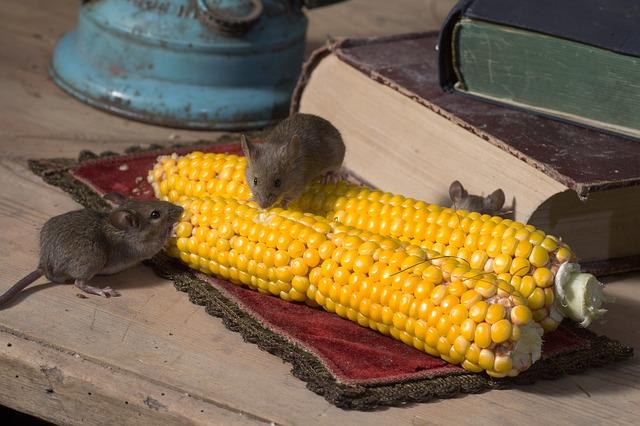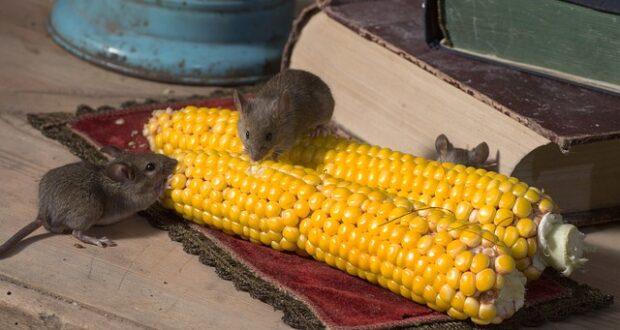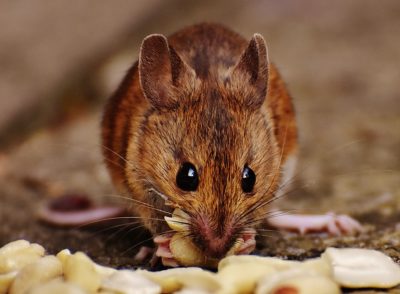
It is important to mouse proof your home. As the weather gets colder, mice are trying to find places to stay warm.
You don’t have to live next to a farm, field or forest to have a large mouse population in your neighborhood. It is important to mouse proof your home the best you can to keep these varmints out.
Mice are the ultimate survivors, and they thrive anywhere they find warmth, shelter, water and food. They may not bother us during spring and summer, but as the chill of autumn weather appears they look for better alternatives. Unfortunately, that often means our homes and cabins. There are a variety of steps you can take to diminish and resist this invasion.
Mice are prolific breeders. One female can produce up to eight litters a year, with six to 10 mice per litter. That means a single mouse can produce 80 other mice who will also breed and reproduce. The affect can be exponential, and that’s why this is often an ongoing battle against the furry little rodents.
Mouse Proof Your Home By Sealing Off Access to Your Home or Garage
This is not as easy as it sounds. A mouse can squeeze through the smallest spaces and gaps between your foundation and framing.
Get Free Backup Electricity — That Works Even During Blackouts!
But you have to start somewhere and here’s where to look:
- Start in the basement and inspect any gaps in your foundation. If you shut off the lights in the basement, you may see daylight peeking through gaps or cracks. You can seal these with a patching cement, caulk, spackle or even steel wool. Mice are notorious for chewing through wood and just about anything else, so a patching cement might be your best bet if it’s an unfinished area and cosmetic appearance is not as important.
- Check for any holes or gaps in your garage, whether it’s attached or freestanding. Garage doors are often left open for various periods of time, and that’s an invitation for mice to hide under and around things in the garage while they search for an entrance to your home.
- Eaves and soffits aren’t out of reach for mice. Mice are good climbers and a tree or vine gives them a pathway to any gap or hole in an eave or soffit. Caulk works, or repair with new wood and re-caulk.
Mouse Proof Your Home By Eliminating Accidental Food Sources
- Look for food left in or around spaces frequently occupied where food is consumed.
- Did the kids leave some potato chips on the floor in front of the video game?
- Did some organic garbage fall on the floor in the garage by the garbage cans?
- If you have pet food, make sure none of it got scattered around by your pet, and seal the food in a sturdy plastic container with a tight-fitting lid.
- Any food storage space can become a destination for mice, and mouse droppings in stored food are especially dangerous. Make sure any food storage is well-protected either in metal cans or sturdy plastic pails or containers.
- Grass seed and wild bird seed in the garage are also mouse magnets. Make sure they’re in sealed containers and on a high shelf.
- Check for incidental water sources.
- I’ve often found a dead mouse floating in the sump-pump well. Try to seal the top to restrict access.
- Wet spots in the basement also create water sources. Seal cracks or areas where seepage pools water. You should probably do this regardless of the mice, but if you’re unaware of the problem, this inspection step can help you remedy it.
Get Emergency Backup Power That Fits In The Palm Of Your Hand
Trapping and Eradicating Mice
There are a variety of options for mouse eradication, and you should consider them carefully, especially if you have pets or children in the house. Some of the approaches are traditional and time-tested, and some fall in the category of new technology.
General Trapping Advice
- Mice are nocturnal animals, which means they come out at night. As a result, they will be most active not only at night, but in a dark room. Shut off the lights and check your traps in the morning.
- Mice hug the walls when they travel. They are skittish and nervous animals and like the reassurance of a wall next to them as they move around. They will foray into a dark and open space for food and water, but your best location for any trap is along walls and in corners or under furniture next to a wall or corner.
- Yes, you can reuse any trap, and there is some evidence that the scent of a dead mouse actually attracts other mice to a previously used trap. That’s up to you. Wear rubber gloves if you take this approach.
- Traditional bait for mouse traps is cheese or peanut butter. I prefer sharp, cheddar cheese pressed around the trigger so the mouse has to exert some pressure to get the cheese. I’ve had many occasions when the peanut butter on a spring trap was successfully licked off the trap without springing it.
1. The traditional spring trap.
We’re all familiar with this mouse trap. It’s a small, rectangular piece of wood with a snapping bar sprung by a spring when a piece of cheese or peanut butter is consumed from the trigger.
- Pros: A quick kill that is inexpensive and allows you to discard both the mouse and the trap. It’s also highly effective.
- Cons: Potentially dangerous to both kids and animals who may innocently trip the trap.
2. Glue traps.
Glue traps are a cardboard box shape that have a strong contact glue on the bottom of the trap. Sometimes you add food to the back of the trap and some are already scented with an attractive scent for mice.
- Pros: These traps are also inexpensive and are specifically designed to be disposable. They’re also pet and toddler safe.
- Cons: Probably the least humane mouse trap. I’ve hunted and fished for years and I’ve always hunted and fished to eat. But I’ll confess that when I used these traps, it broke my heart to see a small mouse squeaking and looking at me with a paw reaching out trying to free itself from the glue. I actually tried to get it loose so I could release it in the forest, but the glue was too strong. I dispatched it quickly and got rid of the glue traps. They work, but I don’t use them anymore.
3. Live-catch traps.
There are many variations on this type of trap. The concept is that they can get in, but they can’t get out. They’ll catch anywhere from one to six mice at a time, depending on the size and type.
- Pros: It’s a humane option requiring you to find a distant location to release the mice. You also can capture mice in bulk if you get one of the larger traps. Most are baited with some type of food or food combination and are usually made of metal so they can be washed and reused. Also, they are pet and toddler safe.
- Cons: They cost more but because they’re reusable, that’s not a big issue. They also tend to be somewhat large and visible, so they’re OK in a basement, but on the kitchen floor they stand out a bit more than you might like. Also, when you release the mice, make sure it’s a good distance from your home. The backyard is just going to invite them to try and get back in, and your neighbor may not appreciate it if you dump them in their backyard.
4. Mouse poison.
Mouse poison is a box of small, edible pellets that are usually made with corn and permeated with a potent poison. The mice eat the poison and will often run to an open space to die, although sometimes they will die in a hidden space and the only way to find them is the smell of a dead and rotting animal.
- Pros: This type of eradication is often used in barns, sheds and other locations that are hard to access or check on a regular basis. It’s also used for large infestations when single traps just can’t do the job.
- Cons: Be very careful with this one. Some stores won’t even sell it for liability reasons. Regardless of how well you hide it, a pet or toddler can die from ingesting it. In the old vernacular it was called “rat poison.” When our dog was a puppy he ate a box, and fortunately my wife caught him doing it. We rushed him to the vet and he put some eye drops in his eyes that caused him to immediately vomit. Sure enough, the tray was filled with the little, green pellets. He survived but it cost us $200 to learn the hard lesson about mouse poison.
5. Ultrasonic sound.
There are products on the market that broadcast a high frequency sound that is supposed to repel mice. I’ve never tried them and they might work, but I worry that they might also affect a pet dog or cat. There are enough versions of this type of product on the market to make me think it works, but I have found mixed reviews on Amazon.com
- Pros: They’re safe for children and if placed properly may actually repel rodents with little effort.
- Cons: Many of these products imply they will repel rodents in a broad range, from mice to rats, squirrels, chipmunks, rabbits, raccoons and possums. That’s what concerns me about cats and dogs.
6. Chemical repellents used to mouse proof your home.
These are repellents that you spray in areas where mice enter or reside. They usually come in a plastic bottle with an adjustable spray, from mist to a direct stream.
- Pros: They’re easy to apply across a broad area or areas.
- Cons: Some people don’t like spraying chemicals around their homes, although there are natural versions on the market. Also, the scent eventually fades. so you have to reapply from time to time.
Keep at it!
After you have tried one or more of the above methods, be vigilant to see if the mice have returned. Droppings are a clear sign they have, as is chewed paper or cardboard shreds. If you think they’re back, don’t hesitate! Once they start reproducing you’ll be back to the battle again until spring.
What advice would you add? Share it in the section below:


